New Spin on an Iconic Spot
Author:Anh-Minh LeStudio AHEAD’s latest hospitality project merges food, wine and music

Taking in the atmosphere at the recently opened San Francisco vinyl bar and restaurant Side A, Elena Dendiberia and Homan Rajai can’t help but smile. A line spills out onto the sun-dappled sidewalk while Manu Dibango’s music wafts from the Tub’s Audio speakers, melding with background chatter. “It’s a Friday afternoon at 12:30, and it’s very happy,” Rajai observes. It is Dendiberia’s second visit today alone, as Side A has quickly become her go-to for a morning cappuccino.
Settling into a banquette in the 28-seat eatery, they are in prime position to survey the lively scene, which includes their design work. The duo, who founded art and design collective Studio AHEAD in 2019, reimagined the former site of beloved institution Universal Cafe, which shuttered in 2021 after 27 years. The location is just a block from their office.
One of the most noticeable interior updates reflects Side A’s emphasis on music as well as food and wine; the owners are chef Parker Brown and his wife and DJ, Caroline. Dendiberia and Rajai conceived the sculptural brushed aluminum DJ booth and record stand that now greets guests, along with the metal shelving behind it, earmarked for an extensive vinyl collection. The booth not only features a dedicated spot to hold the DJ’s drink, but was also designed with a ledge for patrons to rest libations—perhaps a glass of wine from a list curated by Paul Chung, that favors local and Italian labels.
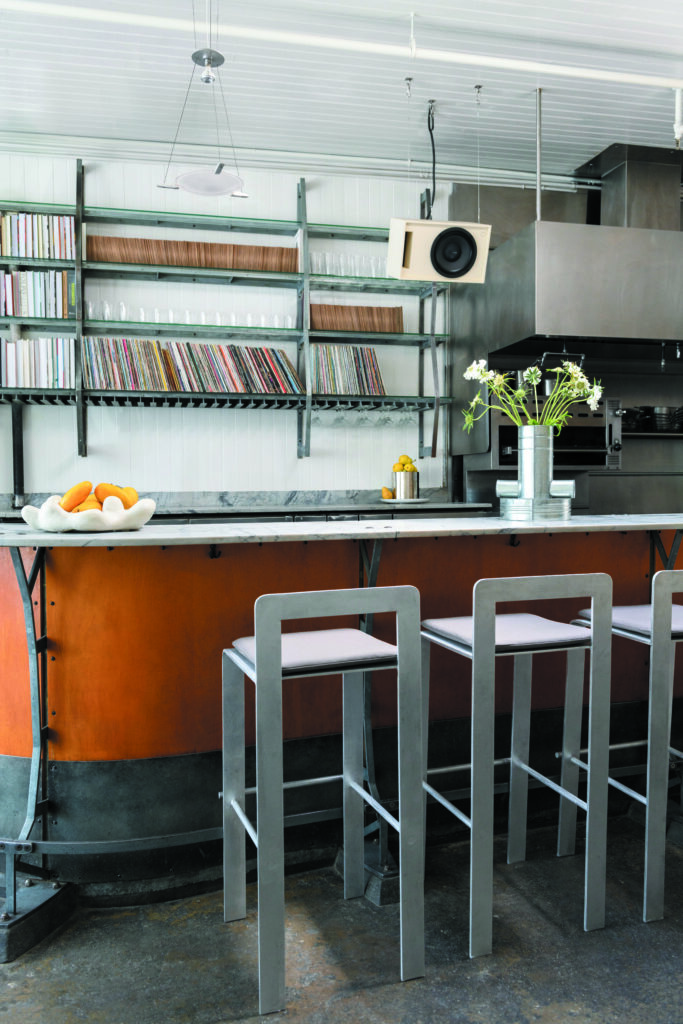
Photos by Ekaterina Izmestieva.
Remnants of the Universal Cafe days, which lend warmth and familiarity, are complemented by a measured dose of newness. “We already loved this space,” Rajai explains. “If something is amazing, keep what’s amazing and just build on it, so that there’s this layering.” Hence, the molded plywood and galvanized steel banquette that he and Dendiberia are seated on, which essentially runs the length of the dining room, is a holdover. As is the plywood bar, topped with marble, separating diners from the kitchen. (The marble came from a historic bank building on Market Street.) Along the banquette wall, on the existing beadboard that was refreshed with white paint, the designers installed two dozen vertical acoustic panels covered in undyed felted wool, thus adding texture, too.
Studio AHEAD kept the concrete floor, light fixtures overhead, and metal and fluted glass screens that act as dividers. The retention of these elements, which Dendiberia describes as possessing “a humble coolness,” is a testament to the design done by Jeff and Larissa Sand when Universal Cafe opened in 1994. “We know what it takes to make custom things, so we wanted to save them,” Rajai says of his and Dendiberia’s approach.
Their vision is further manifested in the Studio AHEAD-designed retro-futuristic aluminum dining chairs and bar stools inside, plus the benches outside. (Building proprietor Jim Skånberg—the owner and design principal of 280 West—is also a metal fabricator and brought all of Dendiberia and Rajai’s metal concepts to life.) Curves and textiles are juxtaposed with stone, concrete and metal surfaces, providing a visual and tactile balance. Amid a minimal color palette, the industrial aesthetic is softened by details such as raw canvas drapes and the seating’s cylindrical backrests, covered in a neutral waxed canvas.
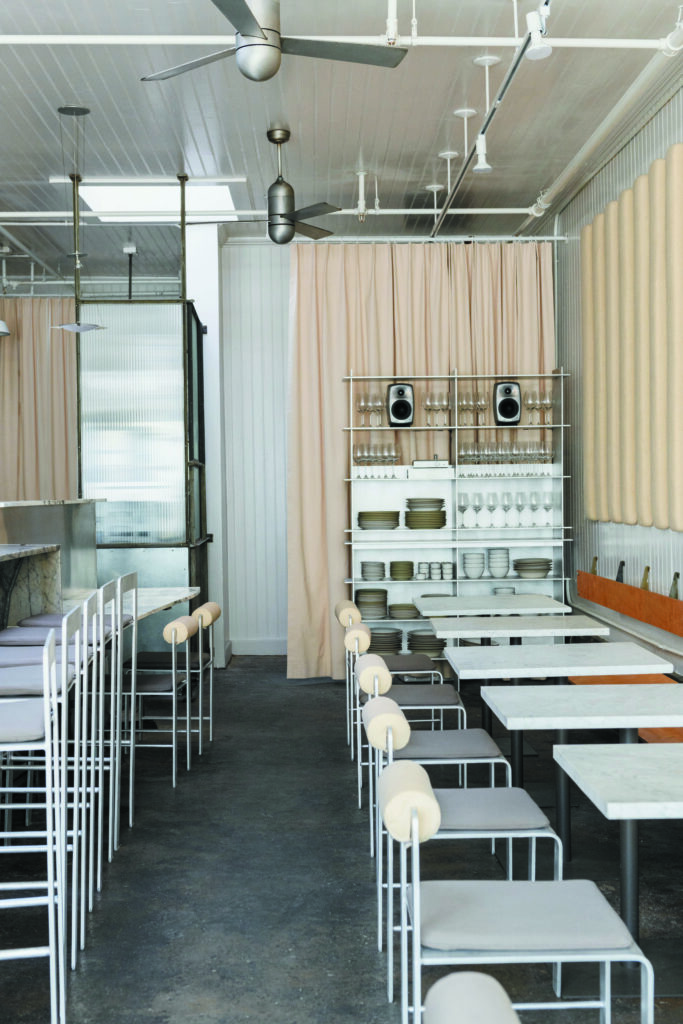
During weekday mornings, the Coffee Movement operates out of the venue; beverages, doughnuts and soft serve are available. Evenings bring Parker Brown’s modern American cuisine—think refined comfort foods like cheese fries accompanied by caramelized onions, smoked trout roe and caviar (he did previously work at Michelin-starred Aphotic, after all). The menu is charmingly written on chalkboards that are rooted in Universal Cafe.
For Dendiberia and Rajai, the project presented an opportunity to contribute to a “cultural moment,” in his words. She likens it to another Studio AHEAD hospitality project: With Others wine bar in Brooklyn, also characterized by thoughtful curation and meaningful connections. Indeed, with its relaxed dinner-party vibe, Side A is poised to become a neighborhood hub—where good food, wine, music and design harmonize. “We wanted to be part of something that was cultural,” Rajai says. “Something with energy and soul.”
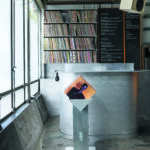
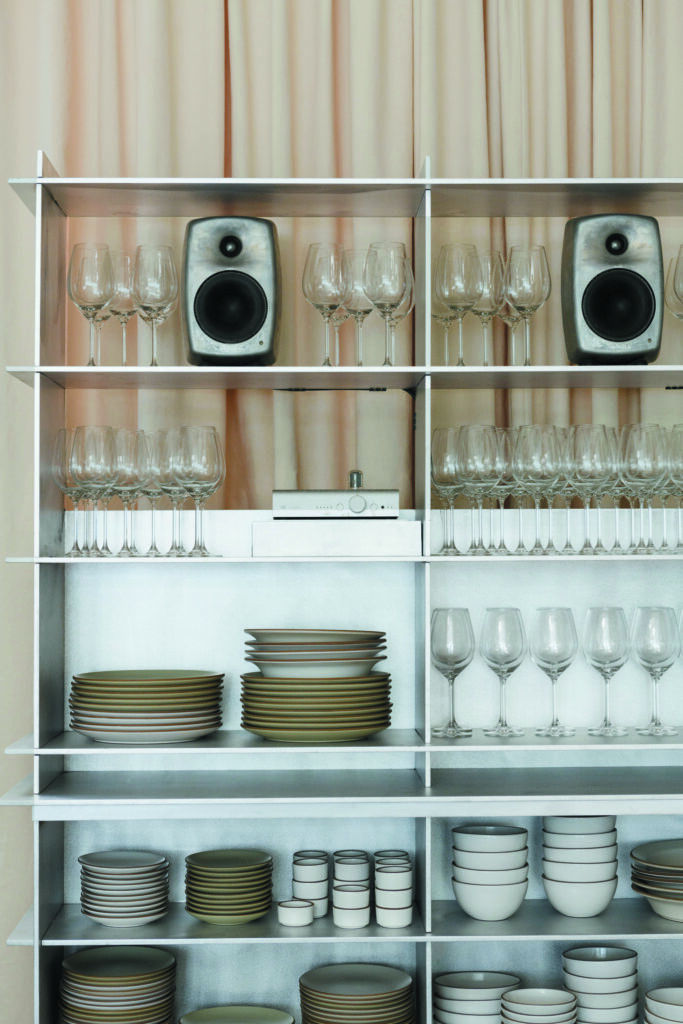 Raw canvas drapes in the rear of
the restaurant not only have a cocooning effect, but also enhance the acoustics in the venue.Raw canvas drapes in the rear of
the restaurant not only have a cocooning effect, but also enhance the acoustics in the venue.
Raw canvas drapes in the rear of
the restaurant not only have a cocooning effect, but also enhance the acoustics in the venue.Raw canvas drapes in the rear of
the restaurant not only have a cocooning effect, but also enhance the acoustics in the venue.